Brandon Ritom’s Will You Still Notice Us If We Step Aside?
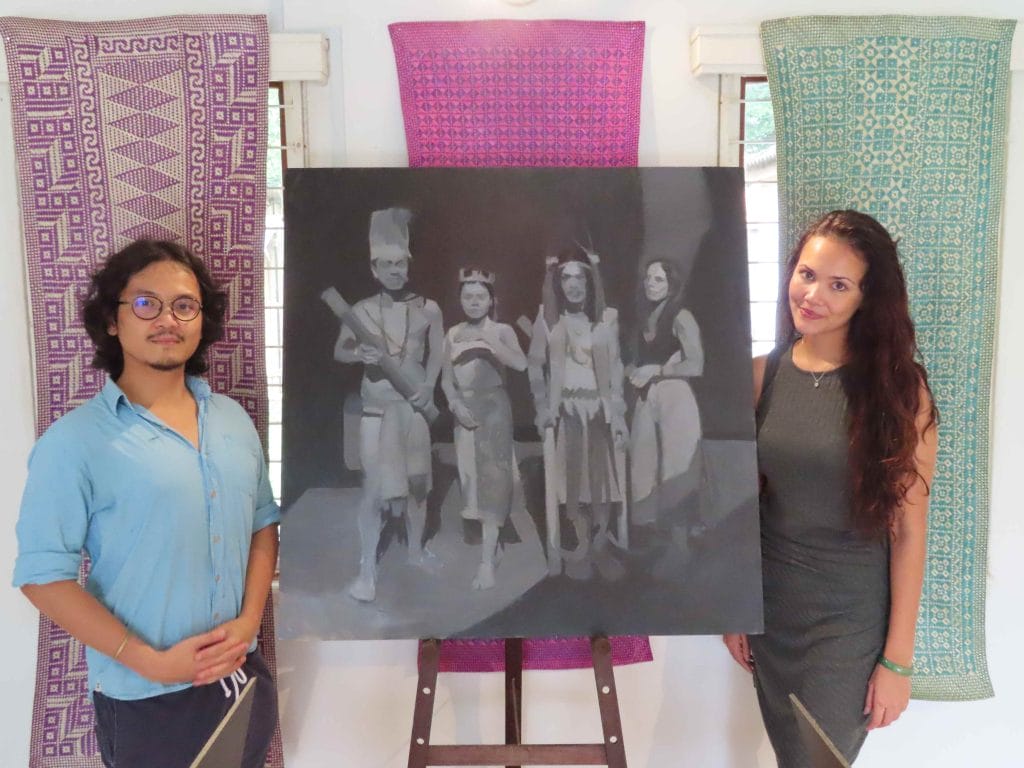
It is a small world after all. Waiting at the doors to the cosy building which houses works by our Malaysian indigenous artists, stands Brandon Ritom with open arms and a huge smile on his face. The last I saw of Ritom was in ‘A’ Level Art class a decade ago, classmates and I alike, admired his work with a hint of jealousy. This part Iban part Bidayuh artist has since developed his talent into an art beyond the decorative, bringing our attention to the minority indigenous peoples of Malaysia. CMIS Hub University Malaya houses various artworks throughout the year, hosting talks and workshops to help us familiarise with the indigenous cultures from which we are growing apart. Walking through CMIS I realise Ritom is not the only one to create consciousness through his art work. Every artist has their own way of expressing their feelings about the land they live on but even more so when this land has been taken away from them. Through different styles, artists’ collections portray the destruction inflicted by shameless disregard of the environment. Here, modern ‘development’ results in death of cultures, environment and people. Many of the canvases scream the need for urgent action. Besides Ritom, artists working closely with CMIS are Jesse Joy, Sonia Luhong, Eleanor Goroh, Dr. Welyne Jehom, Temuan artists Shaq Koyok, Ramlan Koyok and Leny Maknoh, Bidayuh artist Kendy Mitot, and Kelabit artist Alena Murang.
Brandon Ritom’s Mergastua
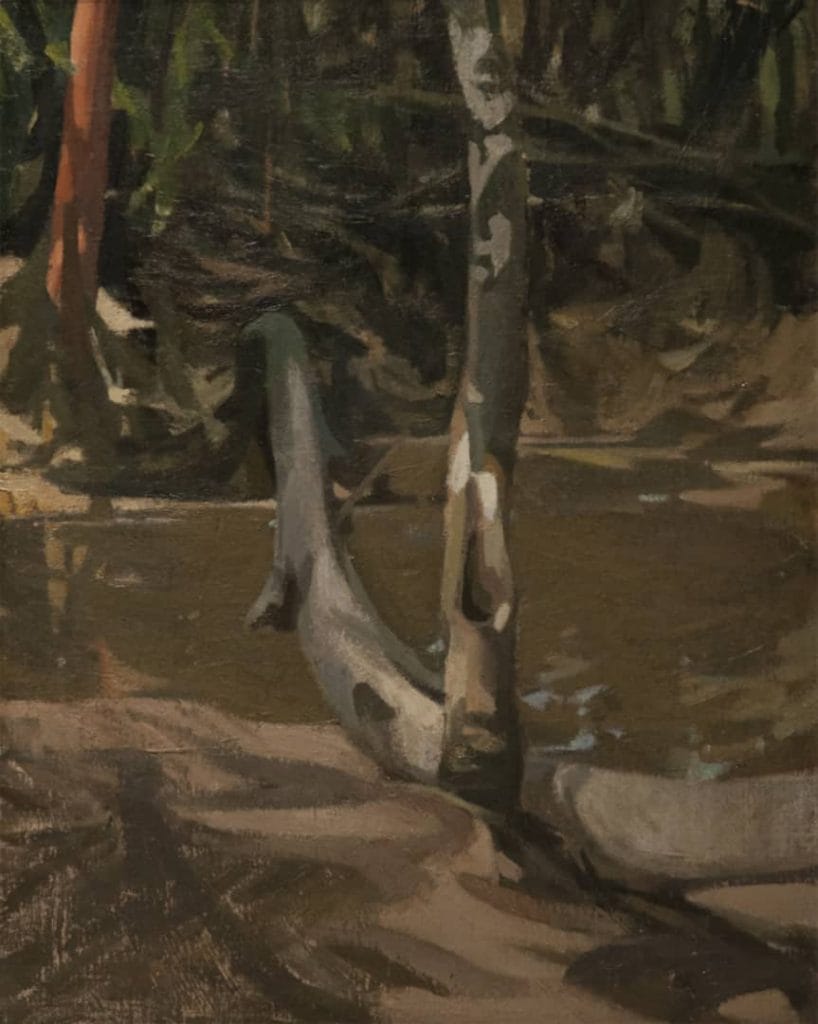
Ritom believes that ” landscapes are autobiographical”. From observation, “when working outdoors, artists often imbue a part of themselves and their experiences into the work, whether consciously or otherwise. In the process of Menua Kitai (Our Land),” Ritom recollects, he “had to rediscover stories about the land that were otherwise neglected. These recollections contribute to the final work, creating another layer of meaning apart from its aesthetic value”.
Brandon Ritom’s Muyang Jabos
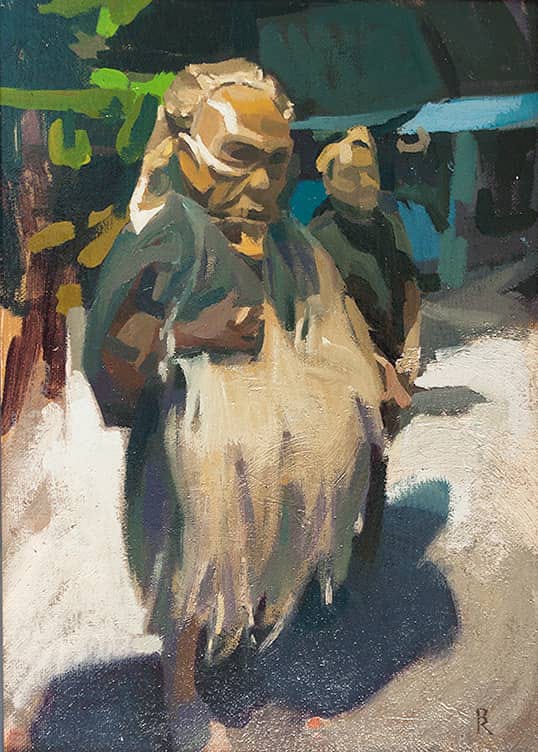
Oil on panel (2019).
“Here is Muyang Jabos from the Mah Meri group in Pulau Carey, famous for their carved muyang sculptures, pandanus weaving, and muyang topeng dance, all of which you will see during their Ayik Muyang and Puja Pantai celebrations, respectively”, Ritom explains. The Orang Asli in Peninsular Malaysia are “vulnerable groups … their way of life is affected by structural and institutional violence, partly as they are a peaceful and nonviolent indigenous group. Their unique cultural practices are tied to their customary lands”, Ritom learns over the years from working with Orang Asli activists and artists.
Kendy Mitot’s Bilayar Simonggi I’eng D’e Piobuo (The Last Voyage of the Souls/Spirits) III
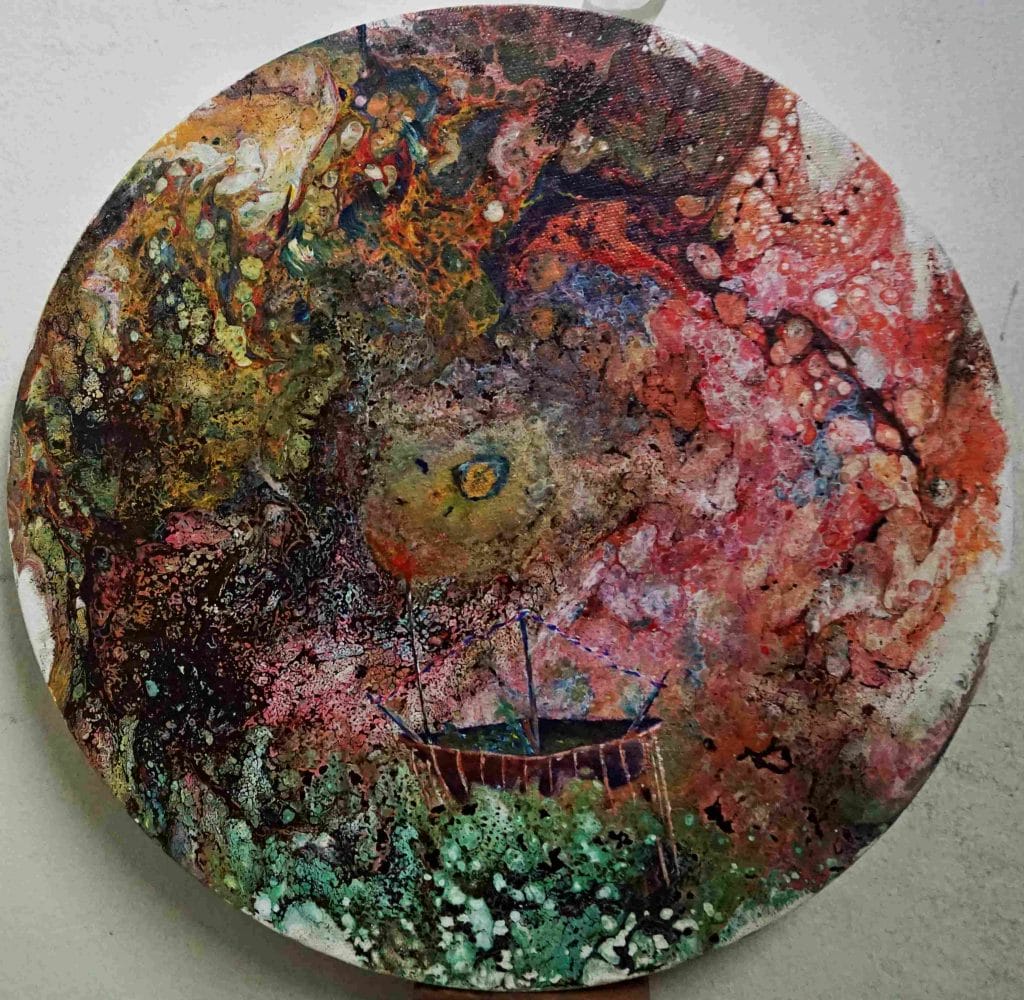
Acrylic & bitumen on canvas (2018).
Of Bidayuh heritage himself, the title of this painting is Kendy Mitot’s take to a dying culture. To him, “this could be the last gawai ritual in the Bidayuh culture”. This artwork pictures the different stages of the spiritual ceremony. “There is the ojung, symbolising a ship which is a sacred medium of transportation, intended for the semoogi i’eng podi (spirit of the padi) to sail across to the realm of their ancestors. The Panyut resembles a candle lit to illuminate the road for i’eng (spirits) while sailing and as a tool to communicate with the other world. The use of a round canvas symbolises the bawal (altar) …” explains Mitot.
Kendy Mitot’s Back to Bidayuh Roots
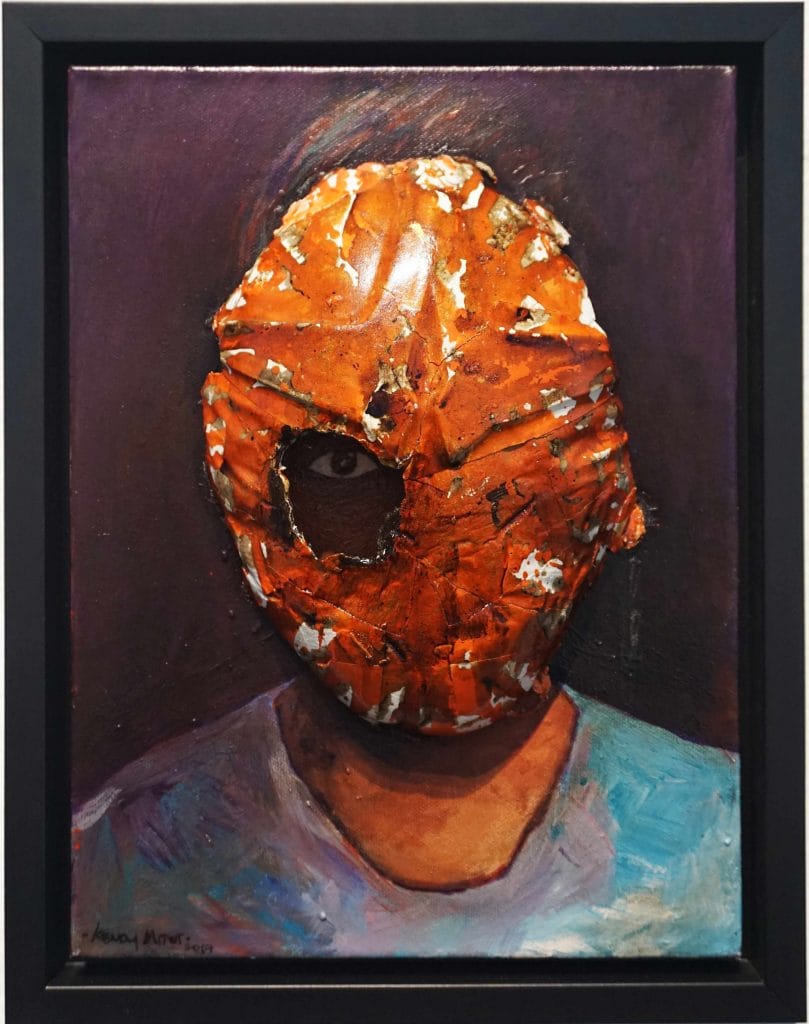
Mixed media on canvas (2017).
This is a self-portrait on his journey back to his Bidayuh roots. The mask represents a knowledge that needs to be acquired … A broken mask, to show the true identity or root as well as a symbol to protect and defend this dying culture. To re-contextualise rituals through different form and content into contemporary art is one way that will keep the culture alive which will then keep indigenous communities and identities alive as well” Mitot enthuses.
Shaq Koyok’s Confession of Palm Oil
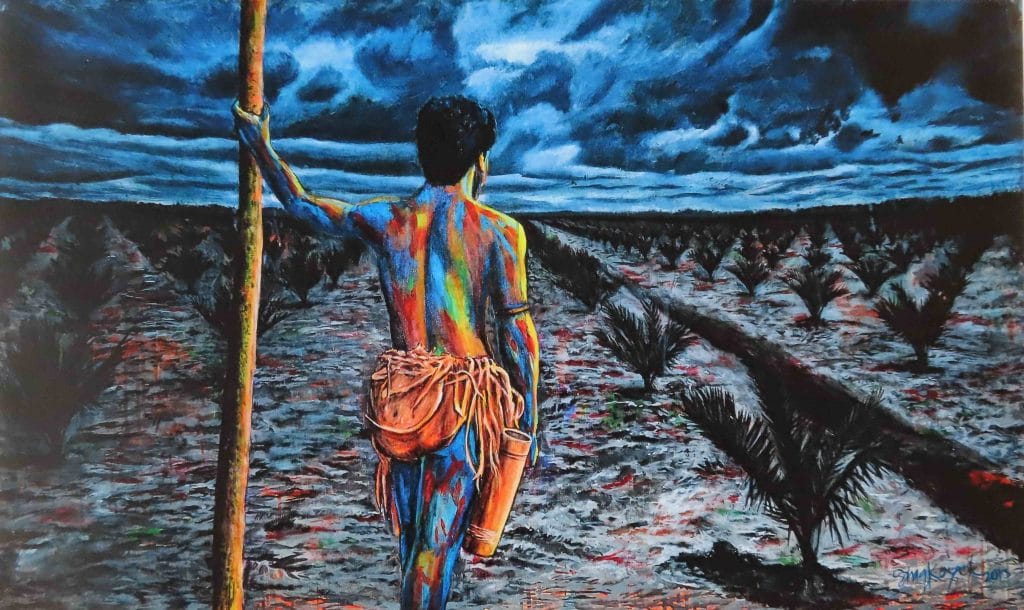
Acrylic on canvas (2013).
From the Temuan tribe of Selangor, Shaq Koyok explores differing art mediums from contemporary painting to installation art. His traumatic experience from his childhood is reflected on his artwork—the jungle around his village was encroached by land developers. This has fuelled his passion in fighting for his people’s land rights. “This bleak coloured landscape” Koyok says, “shows how the oil palm industry has destroyed the native jungle which use to be home for the wild animals and a place for the Orang Asli to practice their culture.”
Shaq Koyok’s Age of Tomorrow
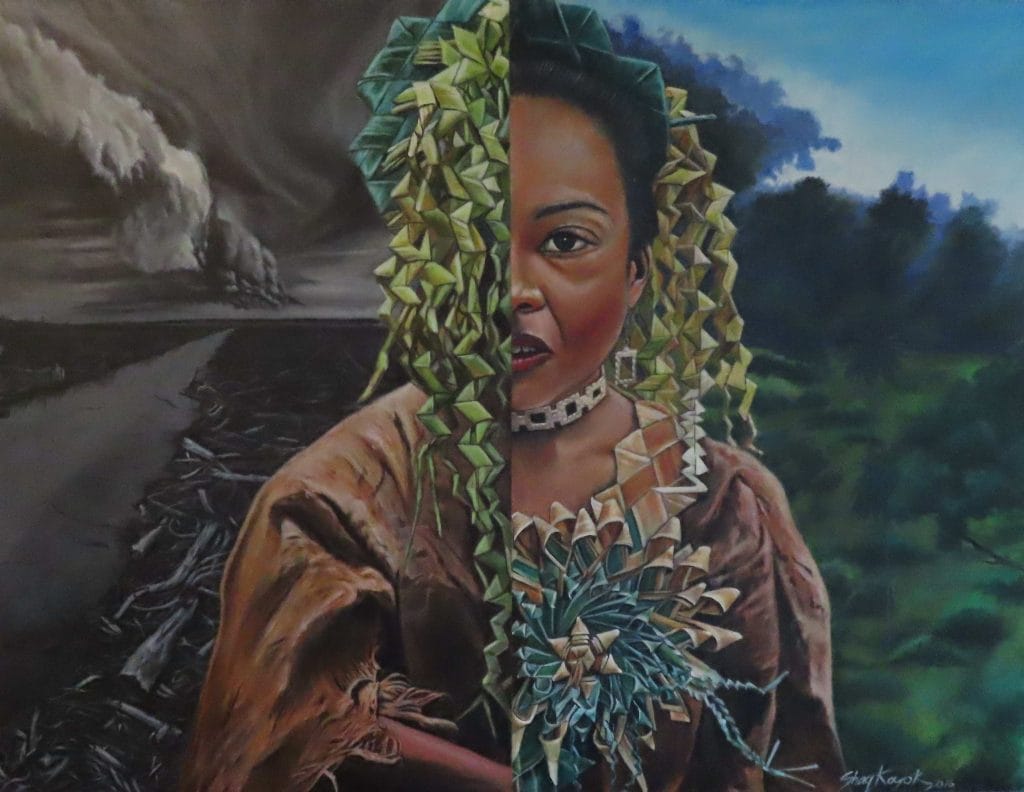
Acrylic on canvas (2016).
Koyok’s paintings show the contrast between how the jungles in which the Orang Asli live in use to be and how it is quickly becoming… no longer a jungle. “My work emphasizes the inequalities that exist between modern consumerism and traditional sustainable ways of life,” Koyok says. He believes that as well as giving a “deeper understanding of multicultural Malaysia” through artwork the struggles faced by Malaysia’s indigenous people are brought to light. Or at least that is the aim.
There are many other artworks which stand out in CMIS, portraying many other issues which have unfortunately been pushed under the carpet concerning the indigenous communities of Malaysia. Putting colours onto canvases stresses the importance of these colours and how, if nothing is done, these colours will fade. Ritom finishes my personal guided tour by sharing an article from The Washington Post about the unfortunate events which struck the Batek people of Kuala Koh. The world really is a small place and it is only getting smaller with the technologies we have today. Why not start taking care of it since we have nowhere else to go?
Mesmerize by Leny Maknoh
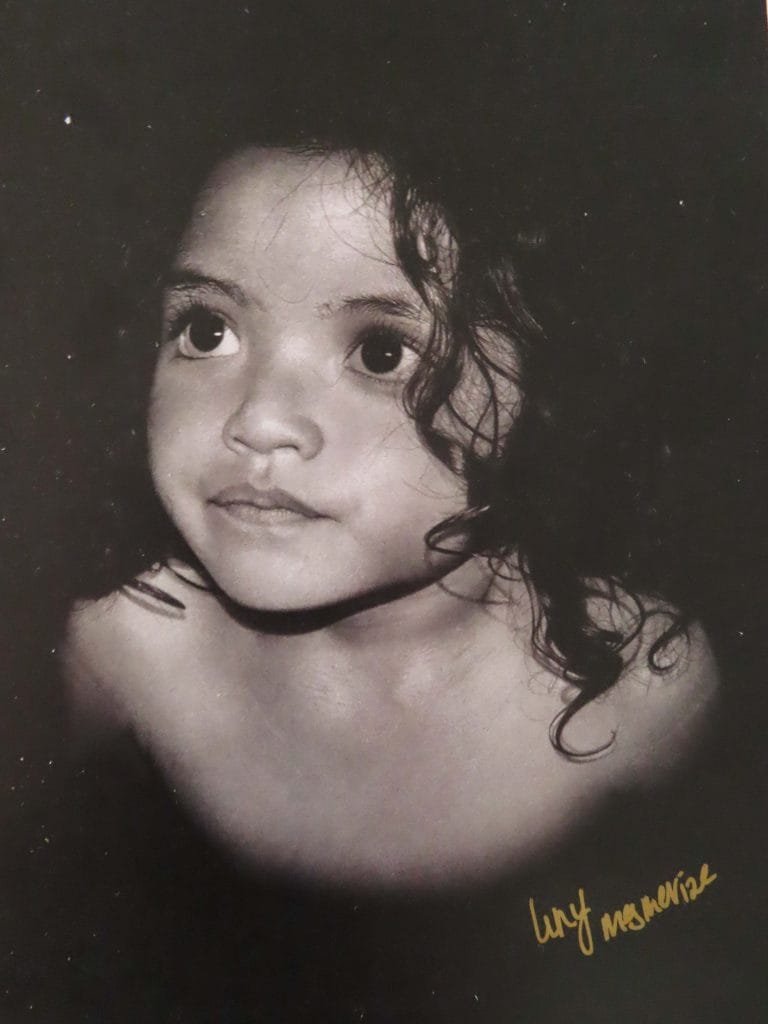
Pencil on paper (2019).
May pah uih? (Where am I going?) by Alena Murang
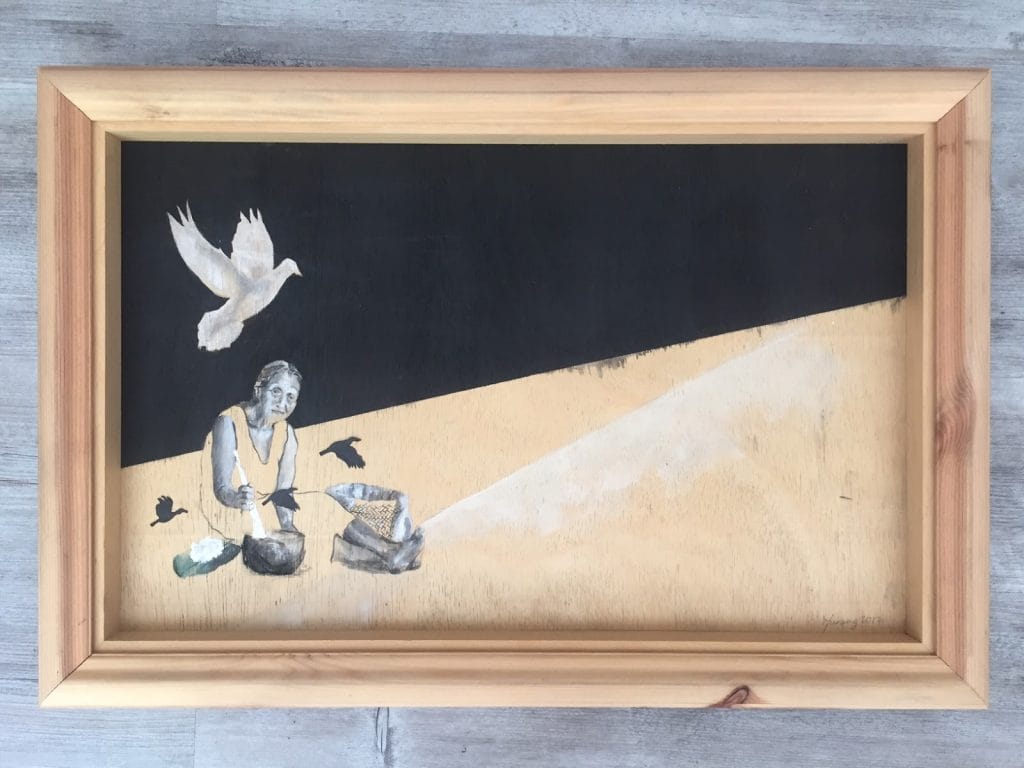
Acrylic, charcoal & paper collage on plywood (2017).
MYR 2600. www.alenamurang.com
“Every species need to guard their own”, Ramlan Koyok. Askar hutan (Jungle army).
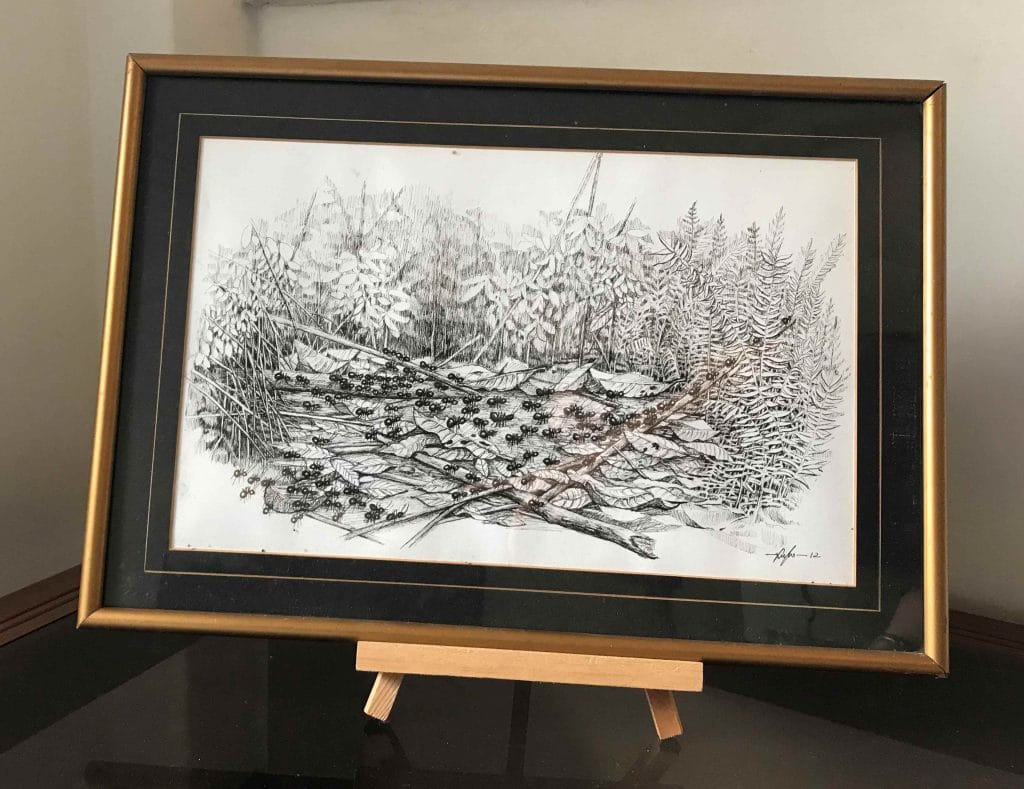
Pencil on paper (2012).



